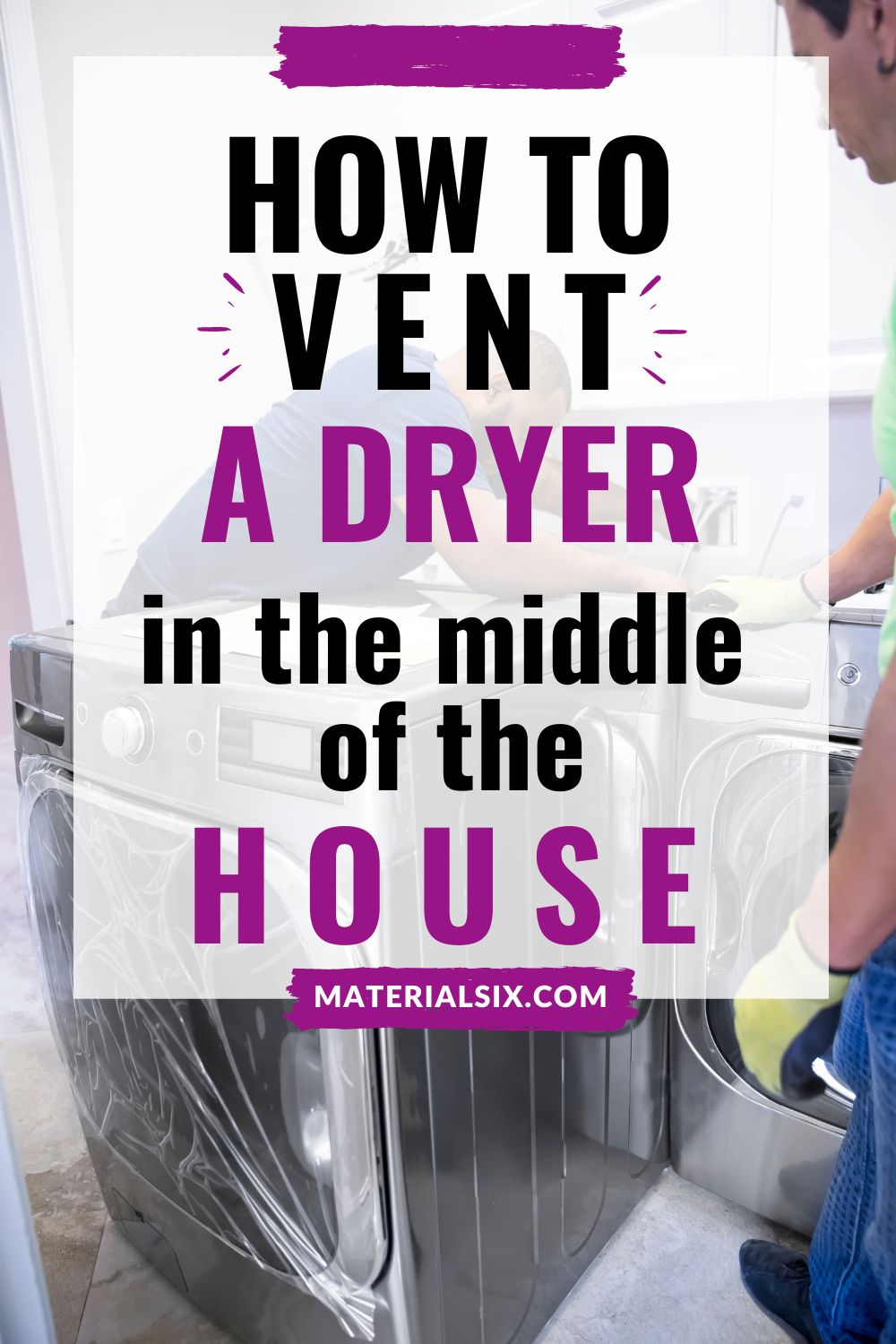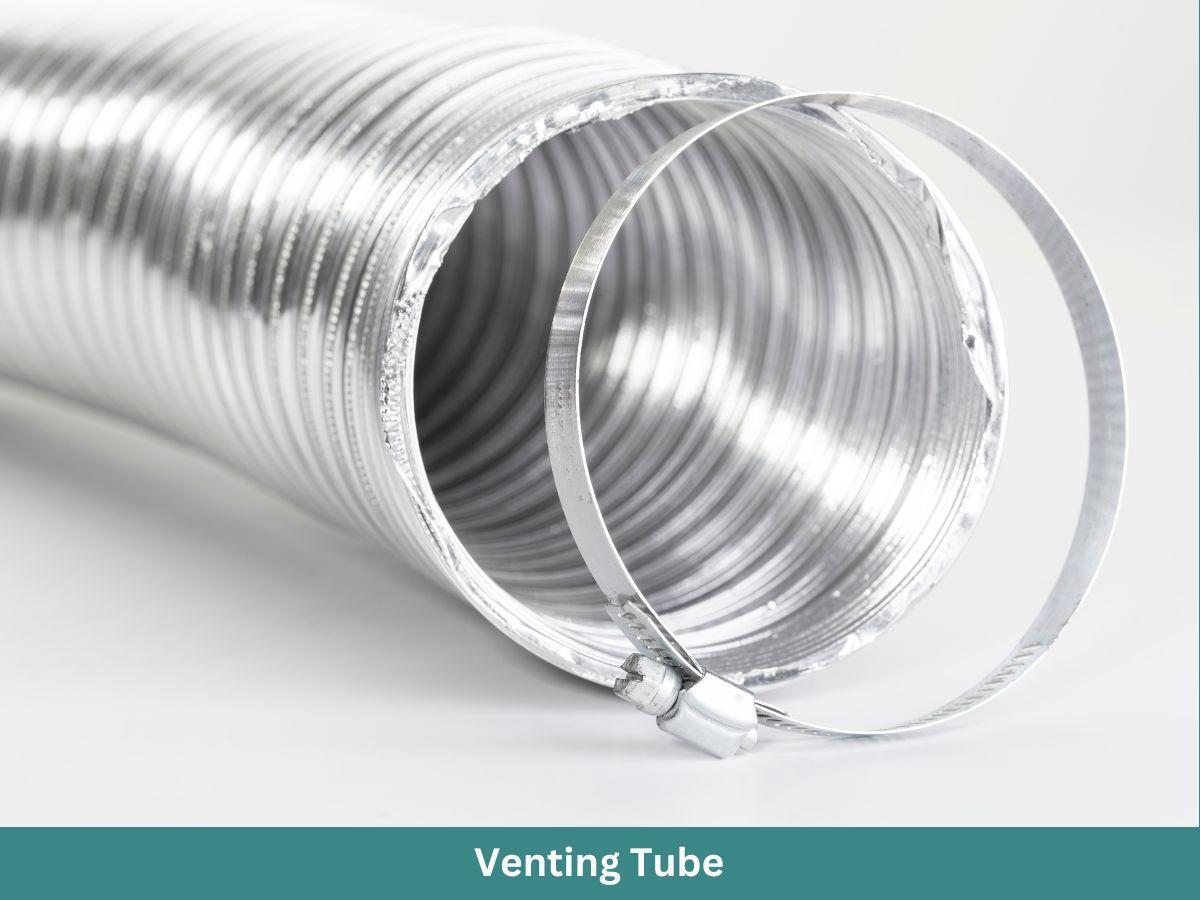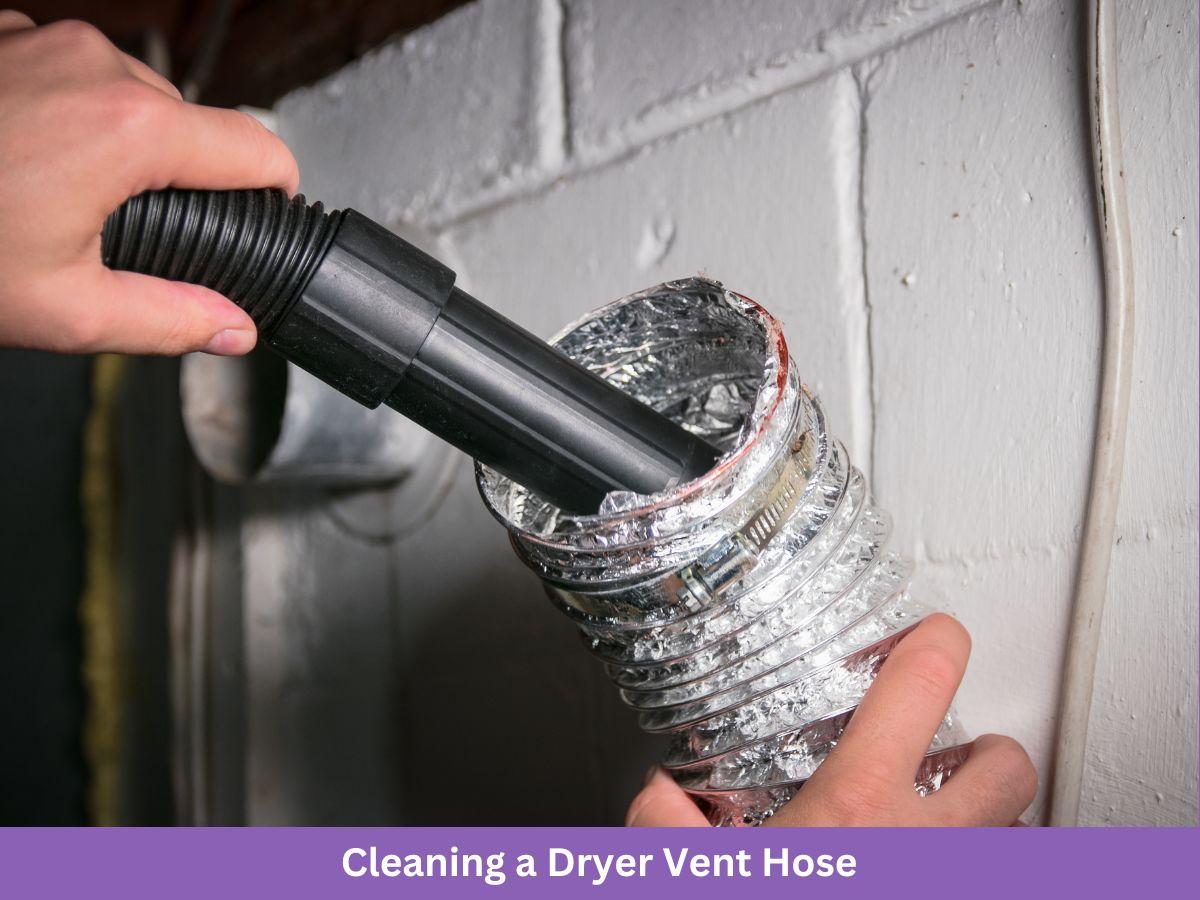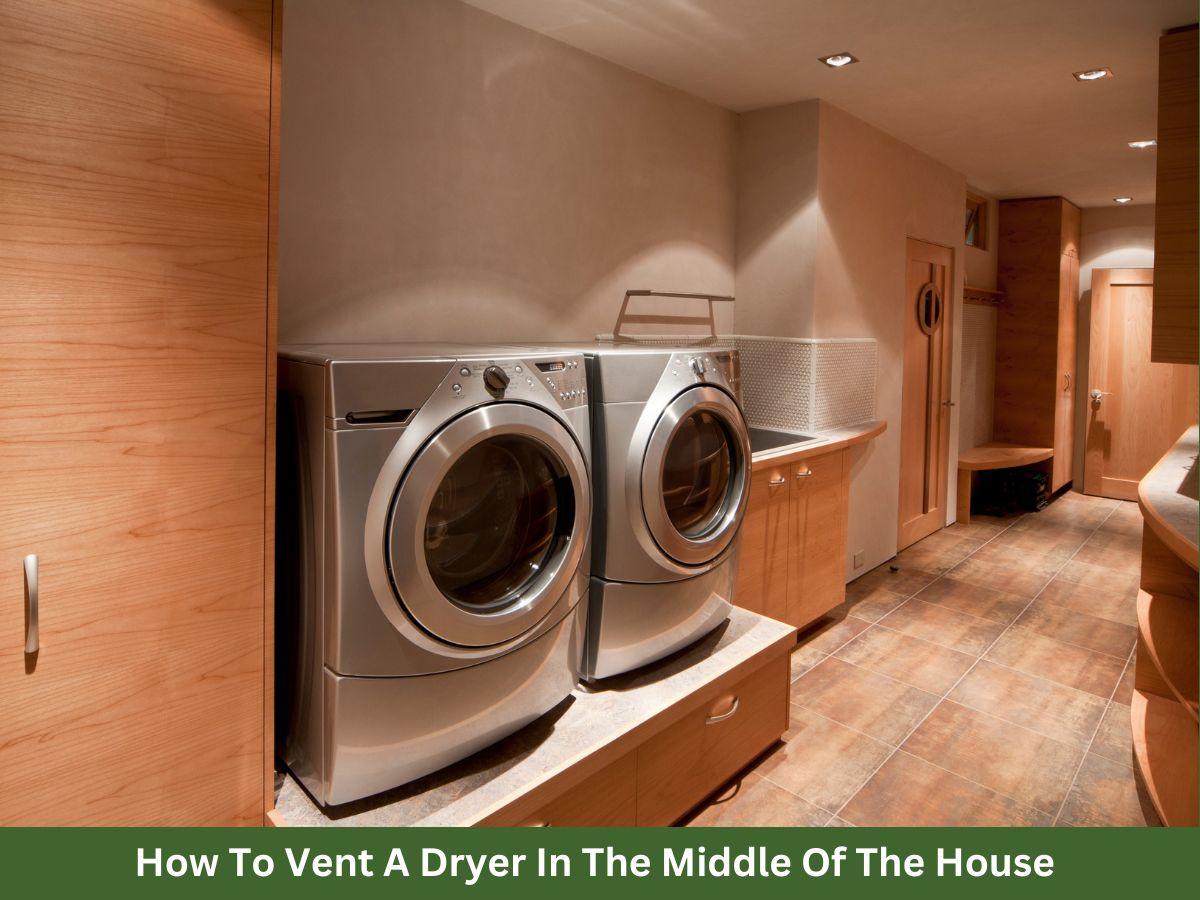A dryer may help you with your daily laundry chores, but if not vented properly, it will become hazardous—especially if it is in the middle of the house. You may ask what’s the solution.
It would be in your best interest to vent the dryer adequately. If you are confused about how to vent dryer in the middle of the house, this article will highlight a complete outline.
Following this 5 step plan, you can ideally vent a dryer in the middle of a house without extreme effort or cash. But before going through the stepwise procedure, let’s judge why venting your dryer is vital for your home.

Why Is Venting Important?
Not venting the dryer timely and adequately may pose severe threats to your house framework. If you use the dryer regularly, you’ll probably understand that it creates a humid environment around the house. If there is no proper venting system to eliminate the moisture produced by vents, it may damage your house walls.
Furthermore, the humid and hot conditions are insanely appropriate for the growth of certain molds. If the moisture doesn’t escape the clothes and stays within the dryer pipes, it will facilitate mold production.
As a result, it will compromise your health and cause fatal disorders. As for the key takeaway, venting is necessary to minimize fungal growth and maintain your home’s healthy environment.
What Is The Step By Step Procedure To Vent A Dryer In the Middle Of A House?

Venting a dryer may seem complex, but it becomes quite simple if you have minimum knowledge about vents. The process is a piece of cake and requires minimal experience and hardware equipment.
To help you vent a dryer in the middle of a house, we have compiled a 5-step process. Here’s how to properly vent a dryer:
1. Start with The First Periscope/Venting Hookup
A venting system includes multiple periscopes. You’ll first have to identify your initial venting periscope to get on with the process. Setting it up would be the first step of the process. Once you have found it, adjust it to a 90-degree angle. Next, set the periscope according to the dryer.
Remember that the periscope end must always be higher than the vent opening at the side of the house. If not, the air would never be pulled out of the dryer. Instead, the periscope would start forcing the air in.
2. Install the Second Periscope
Once you are done installing the first venting periscope, move on to the attachment of the second one. For this step, you’ll need an extra pair of hands to hold the first hose in place to attach it to the second periscope.
Start by directing your assistant to hold the venting hookup where you want it. Next, orient the second periscope to become adjacent to the vent. To attach both of these parts, you can use screws. The same screws can also be used to hold the periscope in place.
3. Seal the Periscope
Even though screws hold your vents in place, these aren’t enough to contain the air. There can be smaller holes from where the moist air may leak out. To minimize the leakage, you need to seal the periscope. There are multiple ways to do so. The most common ones are the use of silicone caulk or metal tape.
Both of these are readily available in most hardware stores, plus they are easy to use. However, while applying the sealants, ensure you do not mess up the airflow inside the vent. You must apply it from the outside so that it does not affect the internal vent surface and cause obstruction for the passing air.
4. Fix the PVC according To Your House’s Framework
Once you are all set with the periscopes, it is time to fix the PVC pipes. To attach the pipes, first measure the length that you want. You can use the hacksaw or a power drill to fix the PVC pipe. But before that, ensure the pipes are cut to the correct sizes. After attaching them with the periscope using a screw, you can seal them with silicone caulk.
5. Reattach the Vent Hose
The last step is to remove the old hose and attach the new venting hose with the periscopes. To detach the old hose, you must unscrew it and pull it out. Then use the screws to attach the new one in its place. Remember that this method is ideal if you have a half-cellar with an adequate framework to push the air out using PVC.
Are There Other Ways To Vent A Dryer? Which One Is The Best?
Venting a dryer is not bound to a single universal way. Fortunately, there is more than one method, each with its own pros and cons.
The most traditional and standard method is venting air outside using a simple vent pipe. Another alternative is the ventless dryer, which uses a condenser to extract moisture from the air.
This method to vent a dryer in the middle of a house can be highly convenient for those who live in apartments where venting is not the number one priority or choice. However, these machines will take longer to serve the purpose and may not be as good as vented dryers.
The other option is to vent the dryer through a wall or roof vent. If you want to keep the vent pipe concealed and out of sight, this option could be your best choice. But, to ensure its perfect functionality, you must guarantee the vent is installed correctly. Additionally, it must comply with local building codes of the country to prevent potential safety hazards.
The best way to vent a dryer inside depends on individual situations and preferences. Although vented dryers are generally more energy-efficient and dry clothes better, they require proper installation to ensure safe functioning. However, with ventless dryers, efficiency, and functionality may be compromised, but it is easier to install and maintain.
The table we have enlisted below has most of the ways to vent a dryer that people use, and it will help you decide how to vent dryer in the middle of the house.
| Venting Method | Efficiency | Safety | Cost | Complexity |
| Roof Venting | High Efficiency | Safe | Expensive | Complex |
| Wall Venting | High Efficiency | Somewhat Safe | Moderate Cost | Moderate Complexity |
| Indoor Venting | Low Efficiency | Unsafe | Inexpensive | Simple |
| Ventless Dryer | Low Efficiency | Safe | Expensive | Simple Complexity |
What Factors Should You Consider Before Venting A Dryer With No Outside Access?
While venting a dryer without outside access, safety and efficiency must be the top priorities. There are several factors to do that.
It is better to monitor these factors to ensure you don’t destroy your home’s internal framework while venting a dryer. Here are three of these primary factors:
1. Exterior Wall
When venting a dryer with no outside access, the dryer’s location and the exterior wall of your home become highly critical. Ensure you are positive about two things; the dryer is located near an outer wall, and the wall is accessible.
If the dryer is present far from an exterior wall, venting may become challenging. In that case, you’ll have to reconsider alternative venting options.
Besides, there must be enough space for the vent pipe to pass through the wall without obstructions; otherwise, it will destroy your house walls.
2. Type of Siding
There are different types of installation methods for different sidings. Some types are challenging to work with compared to others.
You must research the best installation methods by determining the type of siding in your home. For instance, drilling holes to vent a dryer in the middle of a house may become problematic if your home has brick or stucco siding.
At the same time, vinyl or wood siding homes make the venting process relatively simpler.
3. Passage for Ventilating Air
The most essential factor while considering venting a dryer with no outside access is the adequate passage for ventilating air. The installation and maintenance must also be your priority, which significantly impacts this factor.
Therefore, ensure the installation is proper and that no leaks or obstructions are messing up the airflow. It is also essential to regularly clean the vent pipe and check whether the installation method is appropriate to ensure optimal performance and prevent fire hazards.
Is It Important To Clean A Dryer’s Air Vent?
It is highly essential to clean a dryer’s air vent regularly if you use it occasionally. There is an excellent chance that, over time, lint and debris can accumulate in its vent pipes. Therefore, the airflow may be blocked, leading to the failure of dryer functions. Moreover, it can reduce efficiency and result in higher energy bills.
The biggest con of a clogged vent is its heat-producing ability, potentially leading to a fire hazard. In recent studies, NFPA (National Fire Protection Association) disclosed that between 2010 and 2014, each year, the U.S. fire departments recorded the response to 15,970 home fires involving clothes dryers or washing machines. The alarming thing is that failure to clean the dryer was the leading cause of most of these fires.

That brings us to the precaution! To ensure optimal safety, clean a dryer’s air vent at least once every year. However, you must do it frequently if you have a large household. Besides, the first priority must be to hire a professional to clean the vent pipe. But you can also do it using a specialized dryer vent cleaning kit.
How To Ensure Your Home’s Safety If You Have A Dryer Vent At Home?
A dryer vent in your home can be a convenience only if you properly maintain it. It will bring more harm than good if you don’t know how to properly vent a dryer and pay no attention to its safety. Here are some critical steps to take if you have a dryer vent at home.
Start by regularly maintaining your dryer and its vent system. Ideally, it is essential to prevent any unintentional fires or fungal growth. Additionally, it would be in your best interest to clean the lint trap after each use. Turn off the dryer and have it inspected immediately in case of any unusual odors or sounds.
Ensure that the installation of your dryer and vent system is accurate. Plus, it would be good if the vent pipe was made of non-flammable material such as aluminum. The ideal exhaust position of the vent pipe is outside the home. So, try to avoid venting it into an attic or crawl space.
Frequently Asked Questions (FAQs)
1. What Items Are Required to Install The Went?
Here is a list of the essential items required for a typical dryer vent installation:
- Vent Hood
- Vent Pipe
- Second Periscope
- Duct Tape
- Screwdriver and Screws
- Power Drill
- Metal Tape
It is suggested to call a professional for the task. However, if you are going commando and doing it all by yourself, ensure you have sound knowledge about local building codes to install the vent correctly and safely.
2. Is It Safe to Vent a Dryer Into The House?
It is essential to vent your dryer outside to keep your home and your family safe. Dryers produce hot, moist air that is full of lint and debris. This air can harm your health and potentially damage your home walls.
Also, they can cause mold, mildew growth, fire hazards, and poor indoor air quality. So, it is best to vent it outside.
3. Do All Dryers Vent in The Middle?
The location of the dryer vent varies depending on the dryer’s design. Besides, the site of the venting system in your home also has a part in it. Most dryers have a vent located at the back of the machine.
However, some newer models of dryers are designed with a ventless system. Consult your owner’s manual if you need clarification on the location of your dryer vent.
Moreover, you can contact a professional to inspect your dryer and venting system.
4. Are Ventless Dryers Any Good?
Whether a ventless dryer suits you depends on your situation and needs. A dryer with no vents will be a good option if you cannot access the outdoor exhaust easily or need to save space or energy.
However, a traditional vented dryer may be better if you frequently dry large loads of laundry. It is essential to carefully consider your options and consult a professional before deciding.
The Bottom Line
In conclusion, proper venting is crucial for a dryer’s safe and efficient operation. Venting a dryer properly not only helps to improve indoor air quality but also reduces the risk of fire and mold growth.
To vent a dryer in the middle of a house, you must follow an outlined plan for better results.
The prescribed 5-step program is designed to benefit professionals and beginners simultaneously and help you assess the best way to vent a dryer inside or outside the home.
More from Materialsix.com:


